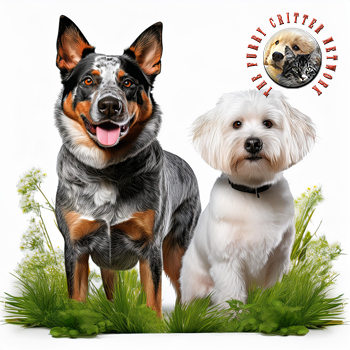Behavior
The Flat-Coated Retriever is an active, multitalented bird dog with a strong desire to please people. Exuberant, confident, and outgoing, they make a loving family pet and can be companions to small children, provided adults are nearby to direct this dog's boisterous enthusiasm. They are usually very good with other dogs and even cats. These retrievers require plenty of exercise and engagement to help channel their natural sporting energy. The British Kennel Club recommends that owners provide dogs with at least 2 hours of exercise a day. While they will protect their owners and property with an assertive bark, they are unlikely to back up such noise with actual aggression. Because of their excellent sense of smell, combined with their boundless energy and eagerness to please their masters, they are sometimes used as drug-sniffer dogs. They are used in the breeding program for The Guide Dogs for the Blind Association in the UK, both as a breed and as cross-breeds with the Labrador Retriever.
Eager and quick to learn, they are best trained in short intervals, as they may bore with repetition. The Flat-Coated Retriever is a slow maturing dog, as they do not reach full maturity until 3–5 years of age. Even then, these dogs retain their youthful, puppy-like outlook and demeanor well into old age.
The Flat-Coated Retriever is a "natural" breed and enjoys partaking in "natural" activities such as rolling in feces, playing in mud, and digging. These dogs are also "thinking" dogs, meaning they want to please but look for a way to bend the rules. This characteristic helps with their hunting ability but only if they are bonded with their owner. These dogs will work for themselves or not at all if there is no motivation to work with the handler or dog-handler bond present.
Health
Regular tests and clearances for hereditary joint conditions such as hip dysplasia, deafness, and eye conditions such as progressive retinal atrophy and glaucoma should be conducted by breeders on any dogs used for breeding. Occasionally, epilepsy is also seen in the breed.
Flat-Coated Retrievers have a higher risk of cancer than most dogs. Hemangiosarcoma, fibrosarcoma, osteosarcoma, and malignant histiocytosis are particularly devastating, and occur at higher rates in them than in many other breeds. According to studies sponsored by the Flat-Coated Retriever Society of America (FCRSA), the average lifespan of the Flat-coated Retriever is only about eight years, with a high percentage of deaths due to cancer. More recent surveys in Denmark and the UK show a median lifespan around 10 years. A health survey of purebred dogs in the UK from 2010 showed approximately 50% of Flat-Coated Retrievers death were due to some form of cancer.
Another more common affliction amongst Flat-Coated Retrievers is gastric dilatation volvulus, otherwise known as bloat. This is not specific to Flat-Coats but it is common due to their large size and deep chests. If left untreated, the dog will die quickly. Gastric dilatation volvulus is responsible for 5% of all Flat-Coated Retriever deaths and around 20% of non-tumour related deaths.
Flat-Coated Retrievers have a very low rate of hip dysplasia and luxating patellas compared to other medium-sized breeds; the Orthopedic Foundation for Animals statistics consistently show a rate of hip dysplasia in the breed of less than 3%. In the 1997 FCRSA health survey, 4.2% of males and 3.2% of females had been diagnosed with luxating patellae.






